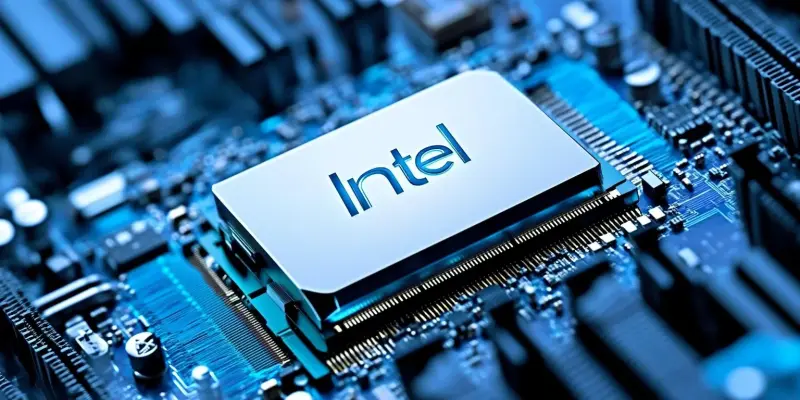Amidst the fierce competition in the graphics card industry, Intel’s release of the Arc B580 has managed to create significant excitement, particularly within the budget PC market. Priced at an enticing $250, the Arc B580 has proven to outperform its more expensive counterparts, the Nvidia GeForce RTX 4060 and the AMD Radeon RX 7600, based on early reviews and benchmarks. This performance-to-cost ratio has made it a compelling option for budget-conscious gamers, providing them with a high-quality gaming experience without imposing a hefty burden on their wallets.
Reviving the Budget Gaming Market
The Gap in Budget Graphics Cards
The introduction of Intel’s Arc B580 is particularly notable in today’s tech landscape. In recent years, both Nvidia and AMD have shown a dwindling interest in producing budget-friendly graphics cards, which has adversely affected the ability to build cost-effective PCs. The high prices of mid-range and high-end graphics cards have discouraged many enthusiasts from building gaming rigs, driving the demand for budget alternatives. Intel’s new offering brings a fresh wave of competition to this market segment and potentially revives the ethos of the budget gaming rig, a quest cherished by hobbyists and those unable to afford premium desktops.
The Arc B580’s arrival has rekindled hope for those seeking a balance between performance and price. The card’s benchmarks indicate not only impressive raw performance but also efficiency in power consumption and heat management compared to its pricier rivals. This resurgence of budget graphics cards could prompt Nvidia and AMD to rethink their strategies, possibly incentivizing them to release their own affordable GPUs. Such a shift would be beneficial to a wide array of consumers and enthusiasts, ensuring more diverse and budget-friendly options in the tech market. With increasing interest in affordable gaming solutions, Intel’s strategic move could redefine the future landscape of budget gaming PCs.
Creating Competitive Pressure
Intel’s determination to remain in the desktop graphics card market, despite potential setbacks post-Battlemage line, appears to be paying off. The Arc B580’s positive reception signals its strong potential in carving out a niche for affordable, high-performance graphics cards in the market. Such success does not go unnoticed in a predominantly monopolistic market. This could set a precedent, compelling other players like Nvidia and AMD to innovate within the budget sector. With increased competition, consumers stand to gain from more robust and cost-effective solutions.
Additionally, introducing strong budget options by Intel challenges the dominance of Nvidia and AMD, forcing them to reconsider their approaches. Intel’s bold entry marks a significant shift, encouraging a competitive environment, and potentially leading to an expanded range of products tailored for various market segments. This is particularly crucial as the gaming and tech world continues to evolve, requiring innovative approaches to meet diverse needs at multiple price points. By establishing a foothold with the Arc B580, Intel underscores the necessity for continuous evolution and industry responsiveness, benefiting consumers in the long run.
Implications for the Future
The Impact on Consumer Choices
In conclusion, Intel’s Arc B580 is not just a breakthrough for the company but also a significant milestone for the budget PC market. By offering impressive performance at a lower cost, it spurs competition and revitalizes interest in building affordable gaming PCs. This development benefits a broad audience, from cost-conscious gamers to tech enthusiasts and hobbyists, possibly leading to a more competitive and dynamic market environment. The Arc B580 could pave the way for an era where high-quality gaming experiences are accessible without breaking the bank, redefining the boundaries of budget gaming.
The Arc B580’s impact on market dynamics underscores the importance of accessible technology. As Intel sets a new benchmark, it encourages consumers to seek value without compromise, potentially sparking a wave of innovation across the industry. This, in turn, can lead to more choices and better affordability, making gaming and advanced computing technology more inclusive. Enthusiasts eagerly anticipate further developments and industry responses, hoping for continued advancements and the promise of even more competitive markets in the future.
Setting the Stage for Future Developments
Amidst intense competition in the graphics card industry, Intel’s launch of the Arc B580 has generated considerable buzz, especially within the budget PC market. With a tempting price tag of $250, the Arc B580 has shown it can outshine pricier models like the Nvidia GeForce RTX 4060 and the AMD Radeon RX 7600, according to early reviews and benchmarks. This exceptional performance-to-cost ratio has made it a highly attractive option for budget-conscious gamers, offering them a superior gaming experience without a hefty price tag.
Intel has smartly targeted a segment of gamers who demand quality without breaking the bank. Traditionally, the budget gaming market has had limited options, often forcing compromises in performance or features. The Arc B580, however, stands out by delivering an impressive balance of price and power. Gamers can now enjoy high frame rates and detailed graphics, typically reserved for more expensive cards. This development is poised to shake up the dynamics of the budget graphics card market, compelling competitors to reevaluate their offerings and prices.

